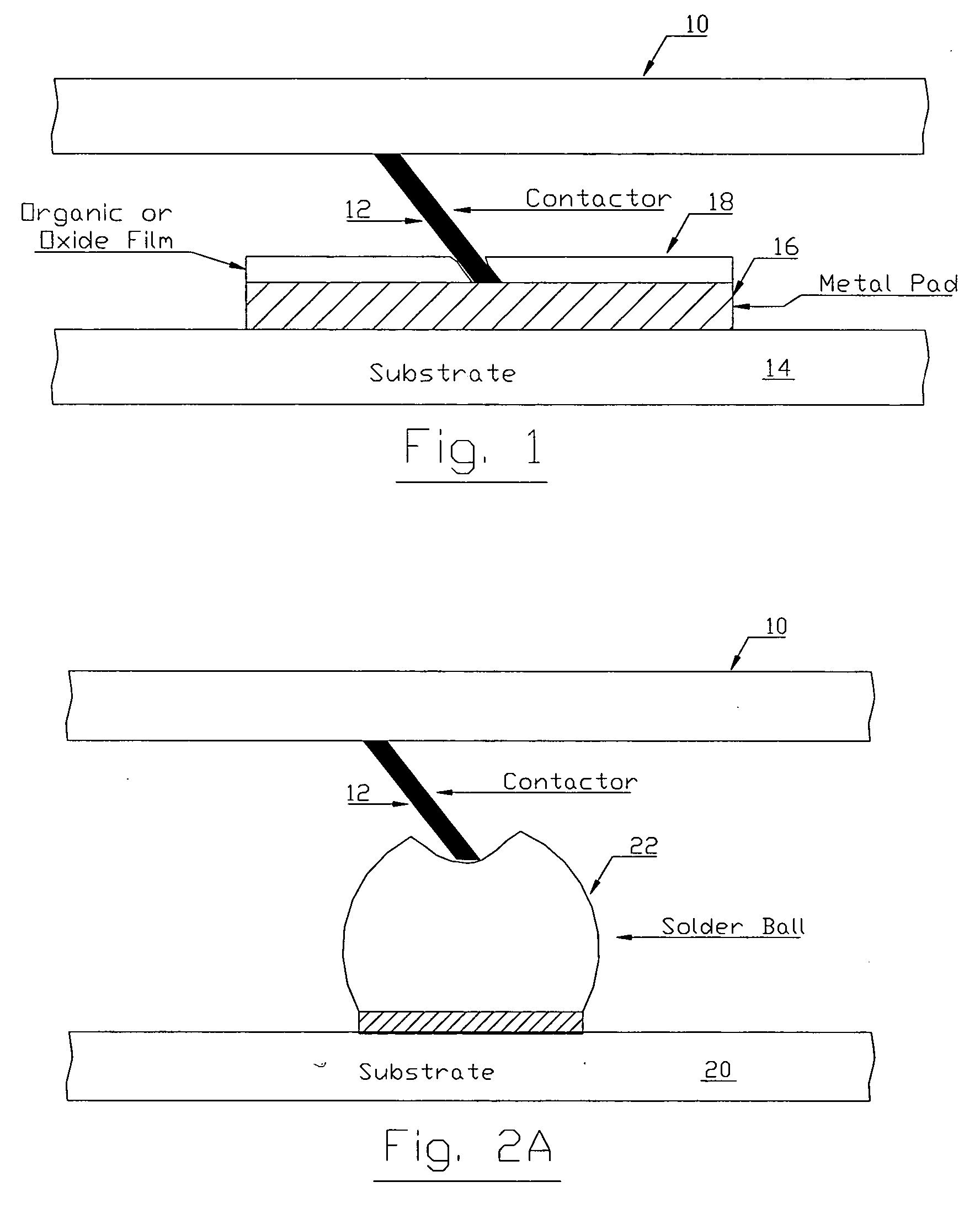Connector for making electrical contact at semiconductor scales
a technology of electrical connections and semiconductor devices, which is applied in the direction of electrical connection formation of printed elements, coupling device connections, instruments, etc., can solve the problems of prohibitively difficult and very expensive to use conventional techniques to make separable electrical connections to these semiconductor devices, and the difficulty of assembling lga packages onto pc boards or multi-chip modules, etc. problem, to achieve the effect of increasing the criticality
- Summary
- Abstract
- Description
- Claims
- Application Information
AI Technical Summary
Benefits of technology
Problems solved by technology
Method used
Image
Examples
Embodiment Construction
[0038] In accordance with the principles of the present invention, a connector for providing separable and remountable connection to a device includes an array of contact elements formed on a substrate where each contact element includes a curved spring portion formed to curve away from a plane of contact and having a curvature disposed to provide a controlled wiping action when engaging a contact point of the device. The connector of the present invention can be used to make electrical connection to devices at semiconductor scales, such as a silicon wafer or a packaged integrated circuit. The contact elements can be formed to make electrical connection to contact points having a pitch of 250 micron or less and in particular, the contact elements of the present invention enable electrical connection to contact points having a pitch of 50 micron or less. By providing a controlled wiping action, the connector of the present invention can be used to connect to a variety of contact surf...
PUM
 Login to View More
Login to View More Abstract
Description
Claims
Application Information
 Login to View More
Login to View More - R&D
- Intellectual Property
- Life Sciences
- Materials
- Tech Scout
- Unparalleled Data Quality
- Higher Quality Content
- 60% Fewer Hallucinations
Browse by: Latest US Patents, China's latest patents, Technical Efficacy Thesaurus, Application Domain, Technology Topic, Popular Technical Reports.
© 2025 PatSnap. All rights reserved.Legal|Privacy policy|Modern Slavery Act Transparency Statement|Sitemap|About US| Contact US: help@patsnap.com



